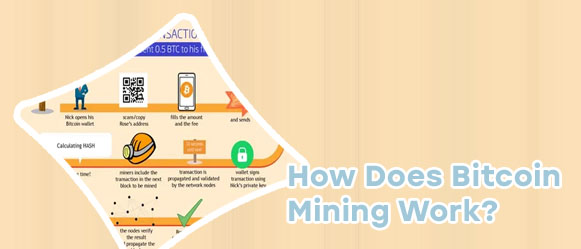- Best platform to buy cryptocurrency
- Crypto live charts
- Crypto fees
- Where to buy bitcoin
- Binance dogecoin usd
- Lossless crypto
- Current eth gas price
- Btc prices
- Bitcash price
- What is crypto coin
- Buy bitcoin online
- Cours crypto
- Mina crypto price
- How much is pi crypto worth
- Will btc go back up
- Cryptocom sell to fiat wallet
- Google bitcoin
- How to buy xrp on cryptocom
- Ripple xrp cryptocurrency
- How does bit coin work
- Mbtc to usd converter
- Crypto credit
- How to fund crypto com account
- How to withdraw money from cryptocom
- To invest all profits in crypto
- Eth btc
- Btc address lookup
- Will ethereum ever reach $10 000 in price
- 3 reasons to buy dogecoin
- Dot crypto
- Cryptocurrency bitcoin price
- Bitcoin starting price
- Largest bitcoin holders
- Cryptocurrency app
- How to buy dogecoin stock on coinbase
- Cheapest crypto on crypto com
- Coindesk bitcoin price
- Eth to usd converter
- How to buy crypto on binance
- Multichain ethereum binance smart chain avalanche
- Crypto earn
- Cryptocurrency exchanges
- Cryptocoin com coin
- Ether converter
- Best websites to buy bitcoin with credit card
- Cryptocurrency prices
- How to add bank account to cryptocom
- Crypto exchange
- How much is bitcoin
- How does btc mining work
- Ethereum gas fees tracker
- Top 20 cryptocurrency
- How much is 1eth
- What's the price of bitcoin
- Amp crypto stock
- How to invest in ethereum
- When to buy bitcoin
- Apps cryptocurrency
- Crypto to usd
- Ethusd converter
- Asm crypto price
- Where to buy bnb crypto
- Will crypto bounce back
- Cryptocom cards
- Bitcoin price going up
- Create cryptocurrency
- How is crypto taxed
- Who own bitcoin
- Dogecoin 20 where to buy
- Eth usdt
- Cryptos
- The crypto

How does mining bitcoin work
Best wallet for crypto
Bitcoin mining is a complex process that involves solving complicated mathematical problems in order to validate transactions on the blockchain network. For those looking to gain a deeper understanding of how mining bitcoin works, the following articles provide valuable insights on the topic:
The Basics of Bitcoin Mining: How Does It Really Work?

Today, we have the pleasure of diving into the world of Bitcoin mining with expert miner, John Smith. John, can you explain to our audience how Bitcoin mining works?
John: Of course! Bitcoin mining is the process by which new bitcoins are created and transactions are verified on the blockchain. Miners use powerful computers to solve complex mathematical problems that validate transactions. Once a miner solves a problem, a new block is added to the blockchain, and the miner is rewarded with bitcoins.
That sounds fascinating! Can you walk us through the key components of Bitcoin mining?
John: Sure! The key components of Bitcoin mining include mining hardware, mining software, a wallet to store bitcoins, and access to a mining pool. Mining hardware such as ASIC miners is essential for solving the mathematical problems efficiently. Mining software helps miners connect to the blockchain network. A wallet is needed to store the bitcoins earned from mining. Finally, joining a mining pool allows miners to combine their computing power to increase their chances of solving problems and earning rewards.
Thank you, John, for shedding light on the intricacies of Bitcoin mining. It's clear that mining plays a crucial role in the functioning of the Bitcoin network, making it an essential aspect of the cryptocurrency ecosystem. This article is important for individuals looking to understand the
Exploring the Mechanics of Bitcoin Mining: A Step-by-Step Guide
Bitcoin mining is a complex process that involves solving mathematical puzzles to validate transactions on the blockchain network. "Exploring the Mechanics of Bitcoin Mining: A Step-by-Step Guide" provides a comprehensive overview of the intricacies involved in this process.
The guide breaks down the concept of Bitcoin mining into easy-to-understand steps, making it accessible to beginners and experts alike. It delves into the technical aspects of mining, such as hash functions, nonce values, and proof of work, to give readers a thorough understanding of how the system operates.
One of the key figures in the world of Bitcoin mining is Satoshi Nakamoto, the mysterious creator of Bitcoin. Nakamoto's vision for a decentralized currency system laid the foundation for the mining process that we see today.
Mining farms, located in regions with cheap electricity and cold climates, play a crucial role in the mining ecosystem. These farms house thousands of specialized computers called miners, which work tirelessly to solve complex algorithms and earn rewards in the form of Bitcoins.
Overall, "Exploring the Mechanics of Bitcoin Mining: A Step-by-Step Guide" is a valuable resource for anyone looking to gain a deeper understanding of how Bitcoin transactions are processed and secured. It sheds light on the inner workings of the mining process and highlights the key players and
The Evolution of Bitcoin Mining: From CPU to ASIC Mining
Today, we have the pleasure of speaking with a cryptocurrency expert to discuss the evolution of Bitcoin mining. Can you tell us about the transition from CPU to ASIC mining?
Expert: Certainly! In the early days of Bitcoin, mining was predominantly done using CPUs, or central processing units. This method was accessible to anyone with a computer and allowed for easy participation in the network. However, as the popularity of Bitcoin grew, so did the difficulty of mining. Miners soon realized that CPUs were not efficient enough to keep up with the increasing demands of the network.
World: How did miners adapt to this challenge?
Expert: Miners began to explore alternative methods of mining, eventually leading to the development of ASIC, or application-specific integrated circuit, miners. These specialized devices were specifically designed for mining Bitcoin, offering significantly higher hash rates and energy efficiency compared to CPUs. The introduction of ASIC miners revolutionized the mining industry, allowing for faster and more cost-effective mining operations.
World: Why is this evolution important for the topic of Bitcoin mining?
Expert: The evolution from CPU to ASIC mining highlights the continuous advancement and innovation within the cryptocurrency space. It demonstrates the importance of adapting to technological advancements to stay competitive in the mining industry. Understanding this evolution is crucial for anyone looking to participate in Bitcoin mining